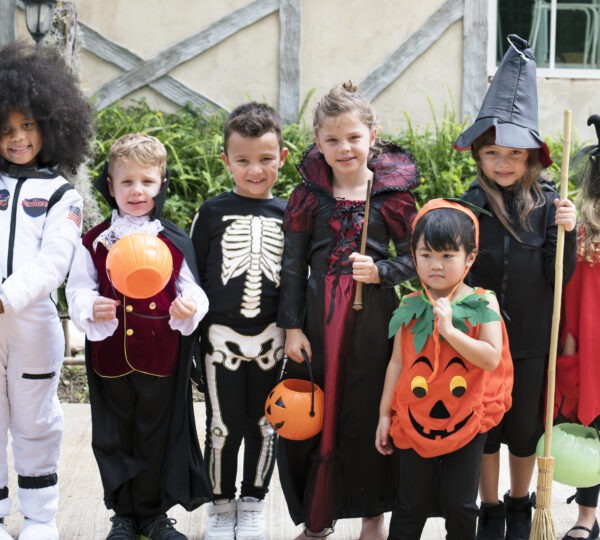
The Real Reason We Wear Costumes on Halloween
Have you ever wondered why during Halloween we don those elaborate, sometimes creepy costumes, spending weeks planning the perfect outfit? Is it simply for fun, or does it have deeper historical roots?
The tradition of dressing up for Halloween is a fascinating blend of ancient rituals, cultural transformations, and modern practices. What started as a festival has evolved into one of the most widely celebrated holidays in the world. In this blog post, we’ll delve into the surprising history of Halloween costumes, uncovering the real reasons behind this spooky costume tradition.
The Origins of Halloween
To understand why we wear costumes on Halloween, we first need to explore the origins of the holiday itself. Halloween, celebrated on October 31st, has its roots in the ancient Celtic festival of Samhain. The Celts believed that on this night, spirits could return to Earth and roam freely.
To protect themselves from these spirits, the Celts would light bonfires and wear costumes that disguised them as ghosts or other supernatural beings. For full details on the origin of Halloween, please read our blog post on de the Unlocking Halloween’s Deeper Meaning: What’s Behind the Ghosts and Ghouls?
The Evolution of Halloween Costumes
The tradition of wearing costumes on Halloween has evolved dramatically over the years. In the early 20th century, costumes were simple and homemade. People would dress as ghosts, goblins, and witches using sheets or other household items. However, with the rise of mass production and commercialization, Halloween costumes became more elaborate and diverse.
In the 1950s, the post-war economic boom led to the production of ready-made costumes, making it easier for people to dress up. According to Mental Floss, these costumes were often based on popular characters from movies and TV shows, reflecting the growing influence of pop culture. This trend continued into the 21st century, with costumes ranging from classic monsters to trendy celebrities.
The Psychology Behind Halloween Costumes
Why do we go to such lengths to dress up for Halloween? The answer lies in psychology. Wearing costumes allows individuals to escape from their everyday lives and adopt new personas. According to Dr. Margee Kerr, a sociologist and author of “Scream: Chilling Adventures in the Science of Fear,” Halloween costumes provide an opportunity for people to explore different aspects of their identities and embrace their alter egos (Kerr, 2015).
Additionally, costumes can serve as a form of social bonding. Dressing up together and participating in Halloween festivities can strengthen relationships and create a sense of community. According to Psychology Today, costumes can also enhance social interactions by breaking down social barriers and encouraging playful behavior.

Diverse kids in Halloween costumes
Modern Trends and Innovations
In recent years, Halloween costumes have become more diverse and innovative. With the rise of technology and social media, costumes have become an avenue for creativity and self-expression. The internet has given rise to a new wave of DIY costumes and viral trends, allowing people to showcase their ingenuity and humor.
For example, in 2019, a viral trend known as “DIY Pet Costumes” took social media by storm, with pet owners creating elaborate costumes for their furry friends (Bustle). Additionally, interactive costumes that incorporate LED lights and sound effects have become increasingly popular, adding a new dimension to Halloween celebrations.
The Impact of Pop Culture on Halloween Costumes
Pop culture has played a significant role in shaping Halloween costumes. From iconic movie characters to famous celebrities, popular culture influences the choices people make when selecting their costumes. According to Forbes, costumes inspired by movies, TV shows, and memes often reflect current trends and societal interests.
For instance, in 2020, costumes inspired by the hit TV show “Tiger King” became a popular choice, reflecting the show’s cultural impact (Forbes). Similarly, costumes based on superhero franchises and fantasy worlds continue to be popular, demonstrating the enduring influence of pop culture on Halloween traditions.
The Future of Halloween Costumes
As we look to the future, Halloween costumes are likely to continue evolving. Advances in technology may lead to even more innovative and interactive costumes, while shifting cultural trends will influence the themes and styles of costumes. Additionally, growing awareness of sustainability and environmental issues may lead to a rise in eco-friendly costumes made from recycled materials.

Three multiracial kids in scary costumes posing with pumpkins in an old house. Halloween concept.
Conclusion
The tradition of wearing costumes on Halloween is rooted in ancient customs and has evolved significantly over the centuries. From its origins in Celtic rituals to its modern-day manifestations, Halloween costumes serve as a way to connect with history, express creativity, and enjoy a shared cultural experience. As we continue to celebrate Halloween, it’s fascinating to reflect on the rich history behind this beloved tradition and how it has shaped our modern celebrations.
References
- Kerr, M. (2015). Scream: Chilling Adventures in the Science of Fear. W.W. Norton & Company.
- Bustle. (2019). DIY Pet Costumes: 18 Cute Ideas to Dress Up Your Furry Friend. https://www.hgtv.com/design/make-and-celebrate/handmade/15-diy-pet-costumes-for-halloween-pictures
- Forbes. (2020).
Tiger King Costumes Are Taking Over Halloween: Here’s Why. https://www.goodhousekeeping.com/holidays/halloween-ideas/g33311235/tiger-king-halloween-costumes/
- Mental Floss. “A Brief History of Halloween Costumes.” Mental Floss,













